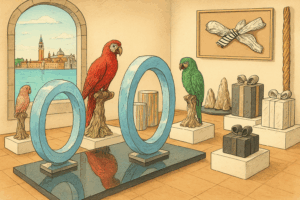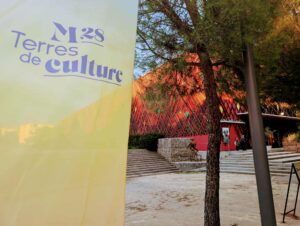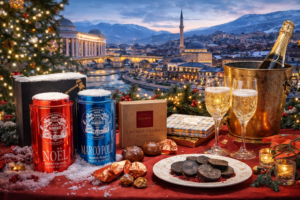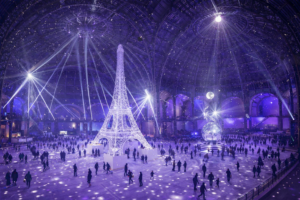Montbéliard hosts the press photography of the 1925-1935 years

From April 7th to September 16th, 2018, the museum of the Castle of the Dukes of Württemberg of Montbéliard offers a major photographic exhibition, untitled “1925-1935, A MOVING DECADE … THE PHOTOGRAPHY AT THE SERVICE OF MODERNITY”, showing the aesthetic upheavals that occurred in France between 1925 and 1935. Ten years suspended, magical and overwhelming, revealed in their fragility as well as in their inventiveness. Over 500 m², the exhibition will present, through more than 150 original prints and a hundred period journals from exceptional loans of Roger-Viollet Collections and those of the Nicéphore Niépce museum, the wealth of illustrations and visual evolutions that the press and the photographers composed to create the image of a striking period.
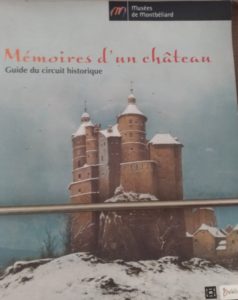
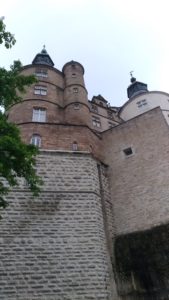 The museum of the Castle of the Dukes of Württemberg, located in the heart of the town of Montbéliard, stands on a rocky spur overlooking the confluence of Lizaine and Allan. Consisting of two large round towers (1424 and 1590) and a main body rebuilt in 1751, the castle is for four centuries, from 1397 to 1793, the residence of the dukes of Württemberg which marked the Montbéliard country of an independence of spirit and freedom that confronted the sixteenth century with the Lutheran reform. In 1960, the castle became a museum gathering rich collections: archeology, natural history and fine arts. Since 1970, the museum has also been developing a collection of contemporary art. The Musée de Montbéliard collection currently has nearly 600,000 pieces.
The museum of the Castle of the Dukes of Württemberg, located in the heart of the town of Montbéliard, stands on a rocky spur overlooking the confluence of Lizaine and Allan. Consisting of two large round towers (1424 and 1590) and a main body rebuilt in 1751, the castle is for four centuries, from 1397 to 1793, the residence of the dukes of Württemberg which marked the Montbéliard country of an independence of spirit and freedom that confronted the sixteenth century with the Lutheran reform. In 1960, the castle became a museum gathering rich collections: archeology, natural history and fine arts. Since 1970, the museum has also been developing a collection of contemporary art. The Musée de Montbéliard collection currently has nearly 600,000 pieces.
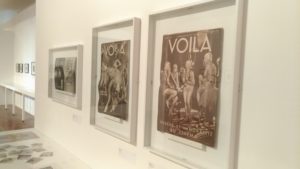 1925-1935 is the decade when the intoxication of the party mixes with the austerity of retirement, the anguish of the future to the happiness of the moment. If the photograph is still for a short time in black and white, the snapshot installs the taste of movement, and what it captures explodes in the reality of fiery colors, glitter and rhinestones as much as in the sobriety and rigor of forms. Between the Treaty of Versailles and the Popular Front, after the first modern Olympic Games in Paris in 1924, this decade 1925-1935 is punctuated by intellectual, artistic, industrial and political milestones that determine the entire twentieth century. An exhibition realized with the exceptional support of the Historical Library of the City of Paris. About the 2 other main contributors, the Nicéphore Niépce museum has emerged since its creation in 1974 as the place of conservation, study and valuation of photography. From the invention of the process in 1827 to the latest digital advances, the museum reflects the diversity of the photographic medium and its practice through the presentation of original works or multimedia installations. On the other hand, the Roger-Viollet Collections are the result of the work carried out between 1938 and 1985 by Hélène Roger (1901-1985) and Jean-Victor Fischer (1904-1985), passionate about photography and frequent travelers, who founded the “Roger-Viollet General Photographic Documentation”. Based on the iconographic collection of Laurent Ollivier, installed since 1880 and already broadcaster of Leopold Mercier, Alinari, Broggi and Anderson, they added the photographs of the family of Helen, teeming with amateurs of all kinds. This first set of some 50,000 photographs was enriched immediately after the war by a continuous effort of acquisitions (Albert Harlingue, Laure Albin Guillot, Roger Berson, Gaston Paris, Charles Hurault, Boyer Jacques, Lipnitzki, Ferrier Studios- Soulier, Neurdein …).
1925-1935 is the decade when the intoxication of the party mixes with the austerity of retirement, the anguish of the future to the happiness of the moment. If the photograph is still for a short time in black and white, the snapshot installs the taste of movement, and what it captures explodes in the reality of fiery colors, glitter and rhinestones as much as in the sobriety and rigor of forms. Between the Treaty of Versailles and the Popular Front, after the first modern Olympic Games in Paris in 1924, this decade 1925-1935 is punctuated by intellectual, artistic, industrial and political milestones that determine the entire twentieth century. An exhibition realized with the exceptional support of the Historical Library of the City of Paris. About the 2 other main contributors, the Nicéphore Niépce museum has emerged since its creation in 1974 as the place of conservation, study and valuation of photography. From the invention of the process in 1827 to the latest digital advances, the museum reflects the diversity of the photographic medium and its practice through the presentation of original works or multimedia installations. On the other hand, the Roger-Viollet Collections are the result of the work carried out between 1938 and 1985 by Hélène Roger (1901-1985) and Jean-Victor Fischer (1904-1985), passionate about photography and frequent travelers, who founded the “Roger-Viollet General Photographic Documentation”. Based on the iconographic collection of Laurent Ollivier, installed since 1880 and already broadcaster of Leopold Mercier, Alinari, Broggi and Anderson, they added the photographs of the family of Helen, teeming with amateurs of all kinds. This first set of some 50,000 photographs was enriched immediately after the war by a continuous effort of acquisitions (Albert Harlingue, Laure Albin Guillot, Roger Berson, Gaston Paris, Charles Hurault, Boyer Jacques, Lipnitzki, Ferrier Studios- Soulier, Neurdein …).
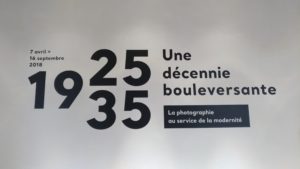
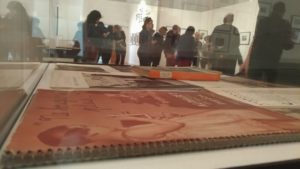

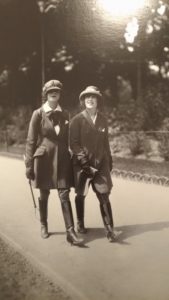 From the International Exhibition of Modern Decorative and Industrial Arts in 1925 to the 1931 Colonial Exhibition, from the Writers’ Congress of 1935 to the launch of the transatlantic liner Le Normandie the same year, until the takeover of the Front in the spring of 1936 popular, France changes face. The famous “French style” dear to Jean Cocteau is upset both from an aesthetic and an intellectual point of view. The stylistic revolutions of the decade materialize the transition between two eras. Whether it’s the press, literature, fashion, music, theater or dance, all ways of saying and doing change. Everyone is invited to express themselves, making an immense space for photography as a witness to these upheavals.
From the International Exhibition of Modern Decorative and Industrial Arts in 1925 to the 1931 Colonial Exhibition, from the Writers’ Congress of 1935 to the launch of the transatlantic liner Le Normandie the same year, until the takeover of the Front in the spring of 1936 popular, France changes face. The famous “French style” dear to Jean Cocteau is upset both from an aesthetic and an intellectual point of view. The stylistic revolutions of the decade materialize the transition between two eras. Whether it’s the press, literature, fashion, music, theater or dance, all ways of saying and doing change. Everyone is invited to express themselves, making an immense space for photography as a witness to these upheavals.
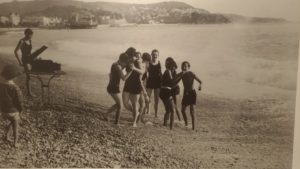
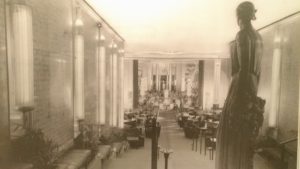
To tackle a lighter subject after having a commemoration period of the 1914-18 War. Over the years 1925-35, there is an explosion in the number of magazines after the emergence of titles like Vu, Paris Match or Life in the United States. This is the beginning of the credit of photographers in these publications.
There are 200 dailies, after the return to order before the orientation towards Nazism.
All the themes of predilection of the time are discussed including the first sensational jolts that still make the charm of a certain press, like transformism, cabaret, nude photography, war photography…
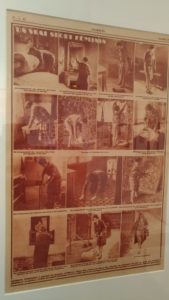
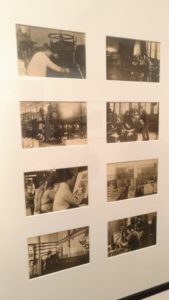 The customary leaves room for the fanciful, facetious or even adventurous. From Jacques Laffite’s precursor to the press to the enterprising Jean Prouvost, from the classic Paul Valéry to the stirring Joseph Kessel, from the sinuous Jules Chéret to the rigorous Cassandre, the way of living and seeing evolves at the speed of lightning. Josephine Baker competes with Mistinguett, Igor Stravinsky and Arthur Honegger enthrall and unleash the halls when Serge Lifar, imperial as much as Maurice Chevalier in another genre, holds the stage of the Opera while his accomplice occupies the heart of the midinettes and s’ fly to Hollywood. The universal exhibition of 1937 is the culmination of this “golden” parenthesis. It sounds the end of a decade deliberately forgetful and light, but especially graceful, modern, chic and whose elegant and sober style will last until the 1950s.
The customary leaves room for the fanciful, facetious or even adventurous. From Jacques Laffite’s precursor to the press to the enterprising Jean Prouvost, from the classic Paul Valéry to the stirring Joseph Kessel, from the sinuous Jules Chéret to the rigorous Cassandre, the way of living and seeing evolves at the speed of lightning. Josephine Baker competes with Mistinguett, Igor Stravinsky and Arthur Honegger enthrall and unleash the halls when Serge Lifar, imperial as much as Maurice Chevalier in another genre, holds the stage of the Opera while his accomplice occupies the heart of the midinettes and s’ fly to Hollywood. The universal exhibition of 1937 is the culmination of this “golden” parenthesis. It sounds the end of a decade deliberately forgetful and light, but especially graceful, modern, chic and whose elegant and sober style will last until the 1950s.

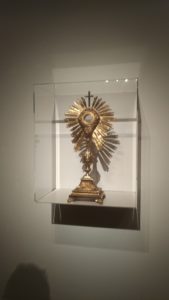 An other exhibition devoted to “Light Effects” is also proposed through a selection of canvases and photographs that oscillate between shadow and light. This new annual exhibition features works by Charles Weisser, Marcel Ordinaire, René Duvillier and David Hockney, Deckherr prints and glass plates by Étienne Oehmichen.
An other exhibition devoted to “Light Effects” is also proposed through a selection of canvases and photographs that oscillate between shadow and light. This new annual exhibition features works by Charles Weisser, Marcel Ordinaire, René Duvillier and David Hockney, Deckherr prints and glass plates by Étienne Oehmichen.
In the dim light of an interior, a young woman appears, seized by the light of a candle (on left photo). Leaving spindle and spinning wheel, the gestures in suspense, she turns to a ajar door .. Further in the halls, stands the tower of the castle in flame, a channel in the moonlight, the beautiful Narcissus mirrored in a fountain or a stream in undergrowth with bright hues. Landscapes, genre scenes, mythological subjects and religious scenes are revealed by the play of a changing light, natural or artificial, symbolic or divine. Rays, chiaroscuro, shadows effects or reflections are declined through a selection of paintings, prints, photographs, books and objects from the seventeenth to the twentieth century, from the collections of the Museums of Montbéliard.
https://www.instagram.com/p/BjHr7FNFzco/?taken-by=francevisiting
Events around the exhibition: The exhibition will be completed by a rich program of events spanning several months, including conferences, concerts and cinema:
– Wednesday, May 16 at 18h: conference Delphine Desveaux, co-curator of the exhibition, “The style 1925-1935, return to the antique or momentum towards the modern? “.
– Wednesday, May 23rd at 8:15 pm: film screening at the Cinema le Colisée, in Montbéliard, in partnership with the association “Le Cinéma et Rien d’Autre”.
– Wednesday, June 27 at 18h: conference Sylvain Besson, co-curator of the exhibition, “The photographic modernity is invited in the fashion press, the example of Jean Moral”.
Open every day except Tuesdays from 10:00 to 12:00 and from 14:00 to 18:00
until January 6, 2019.
Except 01/04/2018, 02/04/2018, 10/05/2018, 21/05/2018, 14/07/2018, 01/11/2018, 11/11/2018.
At the Museum of the Castle of the Dukes of Württemberg, Montbeliard.

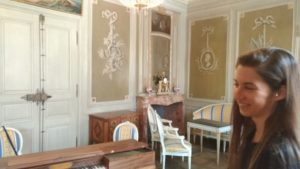
Deeper in the center, a stone’s throw from the Saint Martin temple, an elegant house built in 1774 opens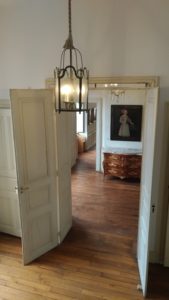
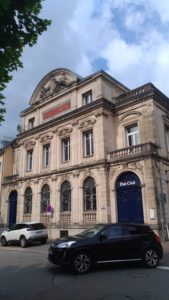 just for you… the Beurnier-Rossel Art Museum!
just for you… the Beurnier-Rossel Art Museum!
In the heart of an urban island composed of buildings of the 16th, was erected the Mansion in 1776 of Louis Beurlier.
Time was frozen under the rule of Wurttemberg, Roman paintings & pieces of marquetry set the scene of a bourgeois interior of past centuries.
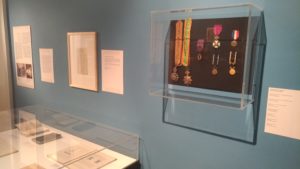
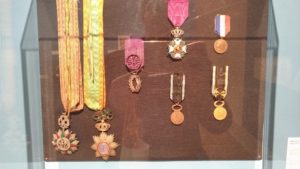
100 years ago, the legacy of Dr. Louis Beurnier allowed to convert one of the richest mansions of the city of Montbéliard into a museum. To underscore the gesture of this benefactor, the City and the Emulation Society are organizing an unique exhibition, which retraces the life and complex personality of Louis Beurnier, a descendant of one of the largest bourgeois families in Montbéliard, who became a surgeon in Paris. It talks about the existence of this activist of the medical world, particularly through his medical career. During the war, he led three surgical services in Paris to treat wounded war injuries. Thus his bourgeois life is put forward with casual chronicles and facts about his rich life.
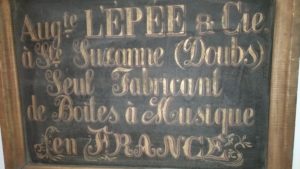 And the music box collection of the Manufacture l’Epée play their charming scores! It took over the brand created and developed in Sainte-Suzanne, in the Pays de Montbéliard, by the Swiss-born industrialist Auguste L’Épée (1798-1875). First specialized in music boxes of which it was one of the main pioneers, then in high precision watchmaking, the Sainte-Suzanne factory closed definitively in 1996 after 157 years of existence and several attempts at diversification unsuccessful, victim of the advent of quartz watches and a deleterious social climate, not conducive to reconversion or recovery projects.
And the music box collection of the Manufacture l’Epée play their charming scores! It took over the brand created and developed in Sainte-Suzanne, in the Pays de Montbéliard, by the Swiss-born industrialist Auguste L’Épée (1798-1875). First specialized in music boxes of which it was one of the main pioneers, then in high precision watchmaking, the Sainte-Suzanne factory closed definitively in 1996 after 157 years of existence and several attempts at diversification unsuccessful, victim of the advent of quartz watches and a deleterious social climate, not conducive to reconversion or recovery projects.
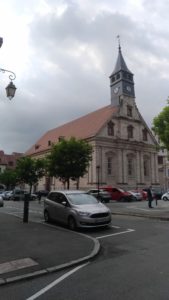 Not far from this, the Saint-Martin Temple, built more than 4 centuries ago (1601) under the direction of the Württemberg architect Heinrich Schickhardt, this building materializes the particularism of the Pays de Montbéliard: an island of Lutheran Protestantism, French-speaking, governed for more than four centuries by a german dynasty the family of Wurtemberg.
Not far from this, the Saint-Martin Temple, built more than 4 centuries ago (1601) under the direction of the Württemberg architect Heinrich Schickhardt, this building materializes the particularism of the Pays de Montbéliard: an island of Lutheran Protestantism, French-speaking, governed for more than four centuries by a german dynasty the family of Wurtemberg.
In its time the construction of the temple crowns the religious policy of Prince Frederick, Duke of Wurtemberg, marking the triumph of Lutheranism.
Open in December during the 3rd french Christmas Market Lights & during guided tours and punctual exhibitions.
https://www.instagram.com/p/BjFnSFXlDZn/?taken-by=francevisiting


